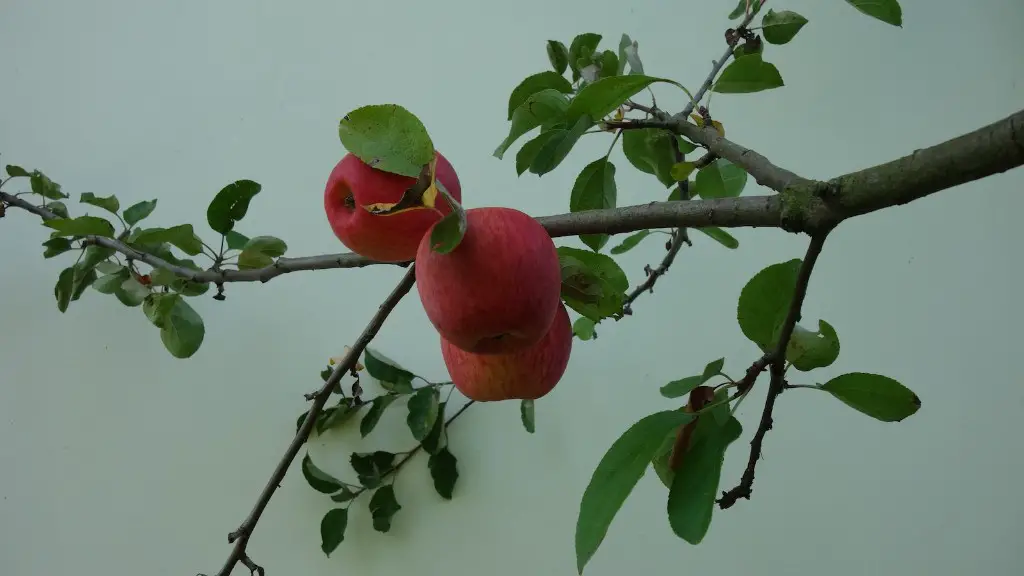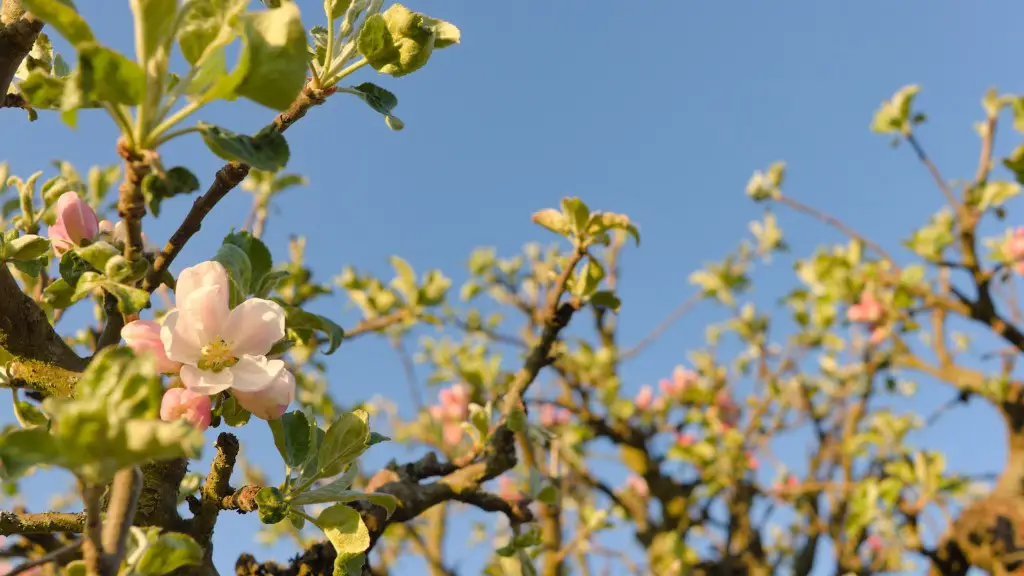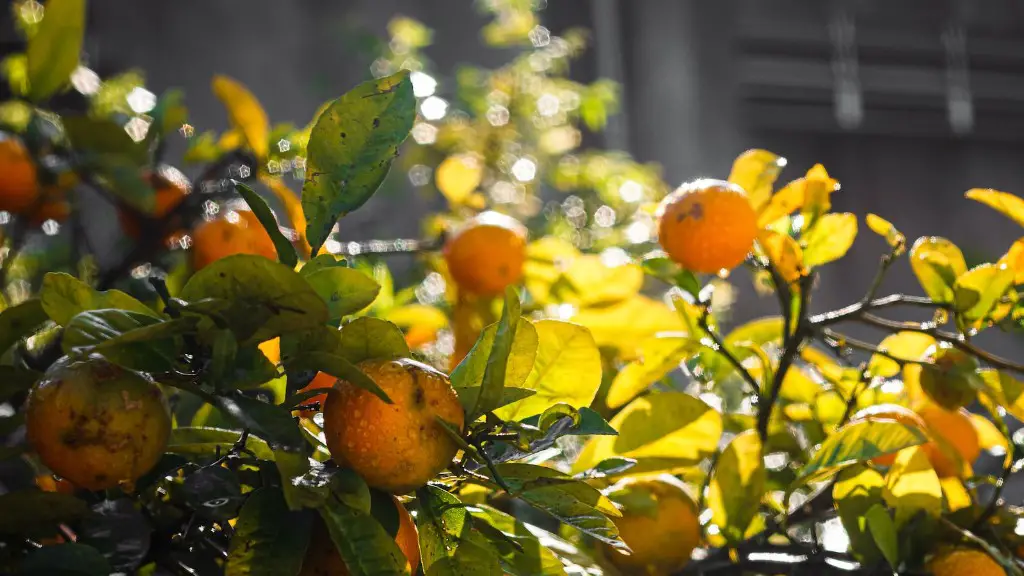Knowing when to pick apples from the tree is a crucial part of getting a flavorful, juicy apple. Apples ripen in stages, so a good rule of thumb is to check the tree every 1-2 weeks from mid-August through October. Apples are considered ripe when their color changes from green to yellow or red, and the flesh of the apple is firm and crisp. The best way to determine readiness for harvest is to rely on an all-around assessment of the fruit on the tree. Is the color right? Do the stems snap easily off the branch, indicating the apple is mature? Does the apple feel heavy in your hand? If the answer to all of these questions is “yes,” then it’s time to pick.
Colour is a great indication as to when an apple is ready to be picked. A green apple isn’t ready yet and won’t be crisp and flavorful, but an apple that has transitioned to yellow or red is usually ripe and ready to be picked. Apples should also be firm and crisp, not soft or too squishy. If you gently press your finger away from the stem and it gives easily, the apple is too ripe and will start to deteriorate soon. To determine readiness, give the apple a gentle press away from the stem with your thumb. If the apple gives slightly, it’s ready.
The stems of apples on a tree also indicate when they are ripe. Stems of ripe apples should appear dry, brittle, and pale. If the stems are still green, it’s likely that the apples are not ready and require a few more days on the tree. Additionally, apples that are still attached to the tree and require a lot of effort to be picked are a good indication that the apples aren’t yet ripe. Harvested apples should come off of the tree easily and with a slight twist.
Certain varieties of apples, such as Honeycrisp, Jonathan, and Red Delicious, ripen in September, whereas varieties such as Gala, Golden Delicious, and Fuji, ripen in October. Apples that ripen in September should be checked for ripeness 1-2 times a week, while apples that ripen in October should be checked at least 3 times a week. In general, apples are considered ready to be harvested when they appear bright and vibrant, have a crisper texture, and are heavy for their size.
Finally, apples have a distinct aroma that increases as they ripen. When the apple is ripe and ready to be harvested, it will give off a sweet scent that adds to the flavor experience of eating a freshly picked apple. Just like with color and pressing the flesh, smell the stem of each apple to make sure it’s giving off the right aroma.
Varieties of Apples
There are dozens of varieties of apple, each with different characteristics, colors and flavors. Honeycrisp, Jonathan and Red Delicious apples are among the most popular varieties, and all ripen during the late summer and early fall months. Gala, Golden Delicious, and Fuji apples often ripen in October.
When it comes to choosing an apple variety for harvesting, keep in mind that apples come in a wide range of colors and flavors, so do your research to find a variety that best suits your needs. Apple trees can also yield multiple different apple varieties, so be on the lookout for different colors and flavors that might be present on the same tree.
When to Harvest
Once an apple has transitioned from a green color to yellow or red and the stem has become brittle and pale, the apple is considered ripe and ready to harvest. Apples should be harvested when they are firm and crisp and come off the branch easily with just a slight twist. If the apple is too squishy or still has a green stem, it is not yet ripe and should remain on the tree for a few more days.
Pick the apples with care, as you don’t want to bruise or damage the fruit. You can do this by using a picking pole or even a fruit picker. Use the pole or tool to lift the apple off of the branch and place it into a container. Once all of the apples are picked, they should be stored in a cool place or refrigerated immediately, as they will begin to spoil quickly.
What to do with Ripe Apples?
Once you’ve harvested ripe apples from the tree, make sure to store them in a cool environment to ensure the apples stay fresh for longer. Apples can be used in a variety of delicious recipes, from apple pies and tarts to salads and appetizers. Apples can also be sliced and dried for snacks, pureed for applesauce, or turned into a sweet and savory apple butter.
To preserve apples for an extended period of time, freezing is a great option. Wash, core and slice the apples, then place them in a freezer-safe bag or container and store in the freezer for up to 6 months. If you’re looking to savor the flavor of ripe apples all season long, freezing is a great way to enjoy your harvest.
Signs of Unripe Apples
It’s important to know the signs of unripe apples to ensure you’re harvesting only mature apples. Apples that have not reached full ripeness will be green, hard to the touch, and have a stem that is still green and pliable. Unripe apples may also not be fragrant, so be sure to sniff the stem before harvesting. If an apple doesn’t seem quite ready, it’s best to leave it on the tree for a few more days.
Recognizing Rotten Apples
Apples that have been on a tree for too long may begin to rot. Signs of a rotten apple include moldy spots, a soft, mushy texture, or a lack of flavor. Rotting apples are best removed from the tree as soon as possible, as they can spread diseases and attract pests, like birds and insects. When harvesting, be sure to check the entire branch and tree for any signs of rot. If you see any, be sure to remove those apples and discard them, as they are not safe to eat.
Storage and Transportation
Once apples are harvested, they need to be stored or transported as quickly as possible, as they can begin to spoil very quickly. Apples should be stored in a cool, dry place, or even better, refrigerated. When transporting, be sure to place the apples in boxes or baskets lined with newspaper or other wrapping paper to allow for air circulation and to keep them from getting bruised.
Conclusion
Harvesting ripe apples from the tree is a rewarding experience, but it’s important to know the nuances of each type of apple variety. Knowing the ripeness indicators, such as color, firmness, aroma, and stem condition, will ensure you get the juiciest, most flavorful apples. It’s also important to watch for signs of unripe and rotten apples, as those apples can spread disease and attract pests. With the right knowledge, you can be sure to get the perfect apple every time.



